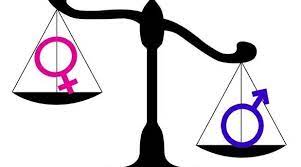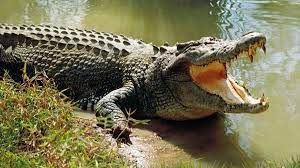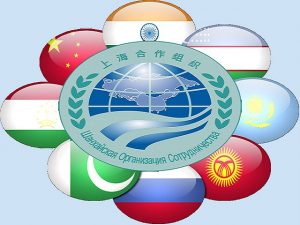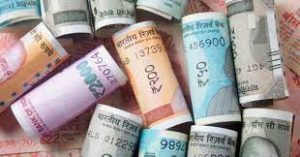Today Current Affairs: 26th August 2022 for UPSC IAS exams, State PSC exams, SSC CGL, State SSC, RRB, Railways, Banking Exam & IBPS, etc
Table of Contents
National Gopal Ratna Awards -2022:

Gopal Ratna Award is one of the highest National Award in the field of livestock and dairy sector.
- Given by: Department of Animal Husbandry and Dairying under the Ministry of Fisheries, Animal Husbandry and Dairying
- Objective: to encourage all individuals and Dairy cooperative societies / Milk Producer Company / Dairy farmers Producers Organizations working in this sector, are conferred in three categories.
- The “Rashtriya Gokul Mission (RGM)”, was launched in December 2014 for the first time in the country, with a view to conserve and develops indigenous bovine breeds in a scientific manner.
Stockholm World Water Week 2022:

National Mission for Clean Ganga hosts virtual session on the first day of the Stockholm World Water Week 2022.
- World Water Week is the leading annual event on global water issues, organized by ‘Stockholm International Water Institute’ (SIWI) since 1991.
- The theme for World Water Week 2022 is “Seeing the Unseen: The Value of Water.”
- In 1991, a public water festival was held in Stockholm city to celebrate the fact that it was again possible for them to fish and swim in the city.
- As part of this festival, a water conference was held, named Stockholm Water Symposium, attended by leading scientists.
Nikshay Poshan Yojna:

Only two-thirds of people living with tuberculosis benefitted from the Union government’s Nikshay Poshan Yojana (NPY), sole nutrition support scheme, in 2021, which raises major public health concern.
- The NPY was launched in 2018 by the Ministry of Health and Family Welfare.
- It aims to support every Tuberculosis (TB) Patient by providing a Direct Benefit Transfer (DBT) of Rs 500 per month for nutritional needs.
- Since its inception around Rs 1,488 crore has been paid to 5.73 million notified beneficiaries.
- As per India TB Report 2022, only 62.1 % of 2.1 million notified cases across the country received at least one payment in 2021.
- In Delhi, which has the highest burden of all forms of TB at 747 cases per 100,000 people, only 30.2 % of patients have got at least one DBT.
- Other poor performers are Punjab, Jharkhand, Maharashtra, Bihar, Rajasthan and Uttar Pradesh. In the North East, Manipur and Meghalaya fared the worst.
Multi-Modal Logistics Park (MMLP):

Agreement for swift development of modern Multi Modal Logistics Park (MMLP) under Bharatmala Pariyojna
- The tripartite agreement was signed by National Highways Logistics Management Limited (NHLML), Inland Waterways Authority of India (IWAI) and Rail Vikas Nigam Limited (RVNL).
- Aim:
- To centralize freight consolidation (freight is goods transported in bulk by truck, train, ship, or aircraft)
- Reduce logistics costs from 14% to less than 10% of GDP (at par with International Standards)
- To ensure that cargo is swapped/shifted from and to Waterways, Dedicated Freight Corridors & Road Transport
- Ensure swift, efficient, economical and environmentally friendly logistics movement
- Empower and energise the economies of scale via PM Gati Shakti.
About MMLP:
- MMLP will be a freight handling facility with rail and road accessibility, comprising of container terminals, custom clearances, cargo terminals (bulk, break-bulk), warehouses and other infrastructures.
- It is being developed under a ‘Hub & Spoke’ model,
- It will focus on a technology-driven implementation of a state-of-the-art freight management system.
- 35 locationshave been identified for the development of MultiModal Logistics Parks.
- India’s first MMLP is at Jogighopa in Assam.
Bharatmala Pariyojanais an umbrella program for the highways sector envisaged by the Ministry of Road Transport and Highways.
Sex Ratio At Birth:

A recent study has reported that “son bias” is on a decline in India as Sex Ratio at Birth normalised from 111 boys per 100 girls in 2011 to 108 boys per 100 girls in 2019-21.
Findings of the Report:
- The average annual number of baby girls “missing” in India fell from about 4.8 lakh in 2010 to 4.1 lakh in 2019.
- The “missing” here refers to how many more female births would have occurred during this time if there were no female-selective abortions.
- From 111 boys per 100 girls in India’s 2011 census, the sex ratio at birth have normalised slightly, narrowing to about 109 in the 2015-16 wave of the National Family Health Survey (NFHS) and to 108 boys in the NFHS 5 2019-21.
- Between 2000-2019, nine crore female births went “missing” because of female-selective abortions.
Religion Wise Sex Ratio:
- The report has also analysed religion-wise sex selection, pointing out that the gap was the highest for Sikhs.
- In the 2001 census, Sikhs had a sex ratio at birth of 130 males per 100 females, far exceeding that year’s national average of 110.
- By the 2011 census, the Sikh ratio had narrowed to 121 boys per 100 girls.
- It now hovers around 110, about the same as the ratio of males to females at birth among the country’s Hindu majority (109), according to the latest NFHS.
- Both Chirstians (105 boys to 100 girls) and Muslims (106 boys to 100 girls) have sex ratios close to the natural norm.
Religion Wise Share in Missing Girls:
- Share in Indian Population:
- Sikh: 2%
- Hindu: 80%
- Muslim: 14%
- Christian: 2.3%
- Share in Missing Girls due to Sex-Selective Abortion:
-
- Sikh: 5%
- Hindu: 87%
- Muslim: 7%
- Christian: 0.6%
Bhitarkanika National Park:

The Bhitarkanika National Park have reached a saturation point in the population of crocodile which could lead to more human-Crocodile conflict.
- Almost 50 people have been killed by crocodiles since 2012 in and around the park, while 25 crocodiles died during the same time after entering human settlements or getting caught in fishing nets.
- Crocodile is a territorial aquatic reptile, that means too many crocodiles can’t live in a small area as there will be increased competition for food, mating partners, basking sites.
- The Union Ministry of Forest and Environment in 1991 had directed the state forest department to stop the crocodile rearing programme in Bhitarkanika due to the saturation point reached by crocodile population.
- However, the government stopped funding for the crocodile breeding and rearing project in 1990.
- Further, the forest department had stopped the crocodile breeding and release programme in 1995 in the park as the crocodile population had reached around 1,000, from 94 in 1975.
Bhitarkanika National Park:
- Bhitarkanika National Park is spread in a vast area of 672 Kms in Orissa.
- It is the second largest Mangrove ecosystems of India.
- The National Park is essentially a network of creeks and canals which are inundated with waters from rivers Brahmani, Baitarani, Dhamra and Patasala forming a unique ecosystem.
- Its proximity to Bay of Bengal makes the soil of the area enriched with salts, the vegetation and the species of the sanctuary is comprised of those which are mainly found in the tropical and subtropical inter tidal regions.
- It is the breeding place for the endangered Salt Water Crocodiles.
- The Gahirmatha Beach which forms the boundary of the sanctuary in the east is the largest colony of the Olive Ridley Sea Turtles.
- The other unique phenomenon is the Bagagahana or the heronry near Surajpore creek.
- Thousands of birds colonise the creek for nesting and the aerial acrobatics performed prior to mating make for an impressive sight.
- Bhitarkanika is also home to eight varieties of Kingfisher birds which is also a rarity.
Shanghai Cooperation Organisation (SCO):

Defence Minister Rajnath Singh travelled to Tashkent (capital of Uzbekistan) on a three-day visit to attend a defence ministerial conclave of the Shanghai Cooperation Organisation (SCO).
- The SCO defence ministerial meeting is taking place around three weeks ahead of the annual summit of the SCO scheduled for September 15-16 in Samarkand.
- The SCO is an influential economic and security bloc and has emerged as one of the largest transregional international organisations.
- India and Pakistan became its permanent members in 2017.
- The SCO was founded at a summit in Shanghai in 2001 by the presidents of Russia, China, the Kyrgyz Republic, Kazakhstan, Tajikistan and Uzbekistan.
- India has shown a keen interest in deepening its security-related cooperation with the SCO and its Regional Anti-Terrorism Structure (RATS), which specifically deals with issues relating to security and defence.
Prevention Of Money Laundering Act (PMLA):

The Supreme Court will hear in open court a review of its judgment upholding key provisions of the Prevention of Money Laundering Act (PMLA), 2002.
- In Vijay Madanlal Choudhary & Ors v Union of India, a judgment delivered on July 27, the Supreme Court upheld the key provisions of the PMLA.
- The SC accepted the government’s arguments on virtually every aspect that was challenged by the petitioners: from reversing the presumption of innocence while granting bail to passing the amendments as a Money Bill under the Finance Act to defining the contours of the powers of the Enforcement Directorate (ED).
- A ruling by the Supreme Court is final and binding. However, Article 137 of the Constitution grants the SC the power to review its judgments or orders.
- A review petition must be filed within 30 days of pronouncement of the judgment.
National Food Security Act:

The Supreme Court (SC) has directed the Centre to increase coverage under the National Food Security Act (NFSA) so that “more and more needy persons and citizens get the benefit” under the 2013 law which entitles rural and urban poor to subsidised foodgrains under the Targeted Public Distribution System.
- The coverage under the NFSA is still decided by the population figures of the 2011 census.
- The SC ordered the Union government to re-determine the NFSA coverage in the States and Union Territories after considering the population increase between 2011 and 2021 so that benefits were not restricted to beneficiaries identified back in 2011.
- “The right to food is a fundamental right available under Article 21 of the Constitution,” the Supreme Court noted.
- In the order, the court directed the States which were not able to register unorganised workers, including migrant labourers, in the e-Shram portal to do so within six weeks.
- The Union Labour Ministry has developed a National Database of Unorganised Workers (NDUW) portal and the e-Shram portal for registration of labourers spread over 400 occupations including in constructions, agriculture, fishing, and dairy, those self-employed and even ASHA and anganwadi workers.
Wind Energy:

Annual installation of new wind power projects in India will peak by 2024 and likely decline thereafter, according to a report released by the Global Wind Energy Council (GWEC) and MEC+, a consulting firm that specialises in renewable energy.
- As part of its transition away from fossil fuels, India has committed to sourcing half its electricity in 2030 from non-fossil fuel sources and installing 60 gigawatt (GW, or 1000 MW) of wind power by 2022.
- So far, only 40 GW of wind power capacity has been established.
- Wind industry installations have been slowing down in India since 2017.
- Only 1.45 GW of wind projects were installed in 2021 with many delayed due to the second wave of COVID-19 and supply chain-related disruptions.
- To compensate, the Ministry of New and Renewable Energy (MNRE) granted a blanket timeline extension for seven-and-a-half months after the scheduled commissioning date (SCD) for projects with power purchase agreements (PPAs) signed before June 2021, which pushed the SCD of 0.7 GW projects to 2022.




